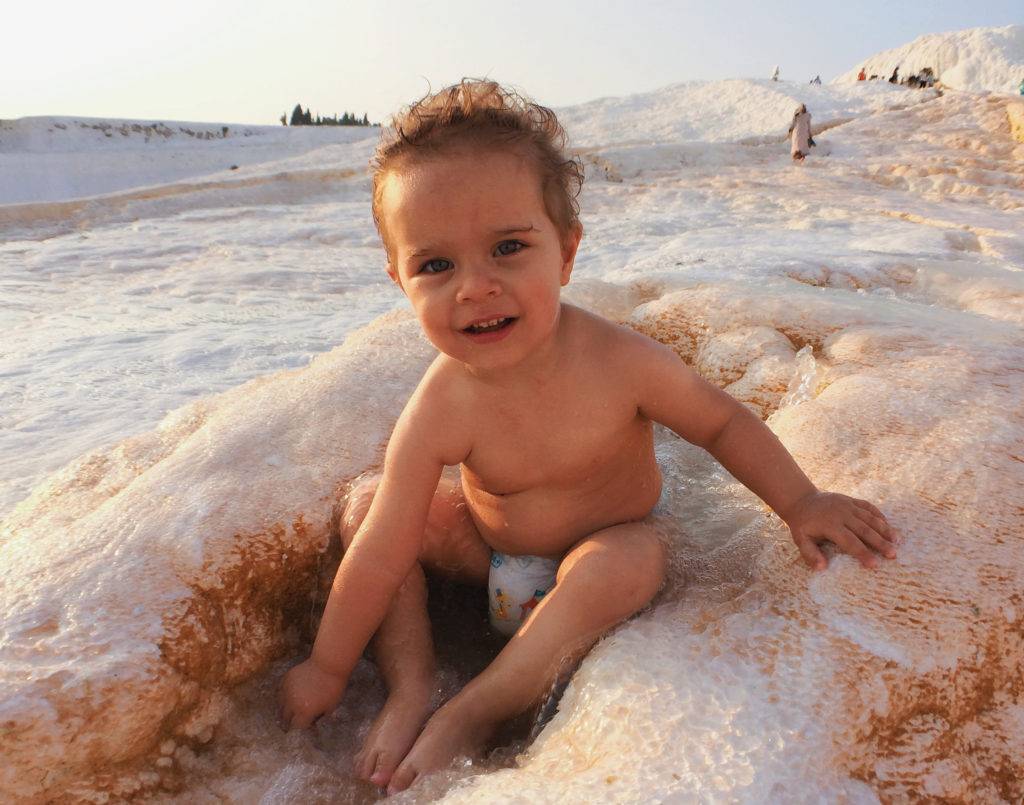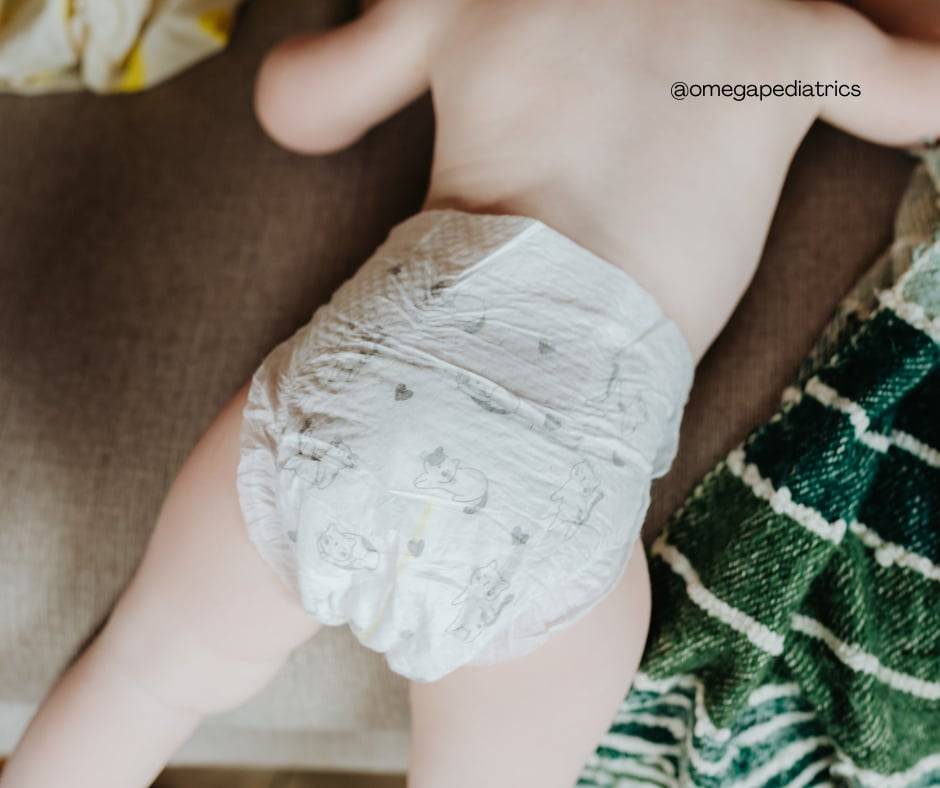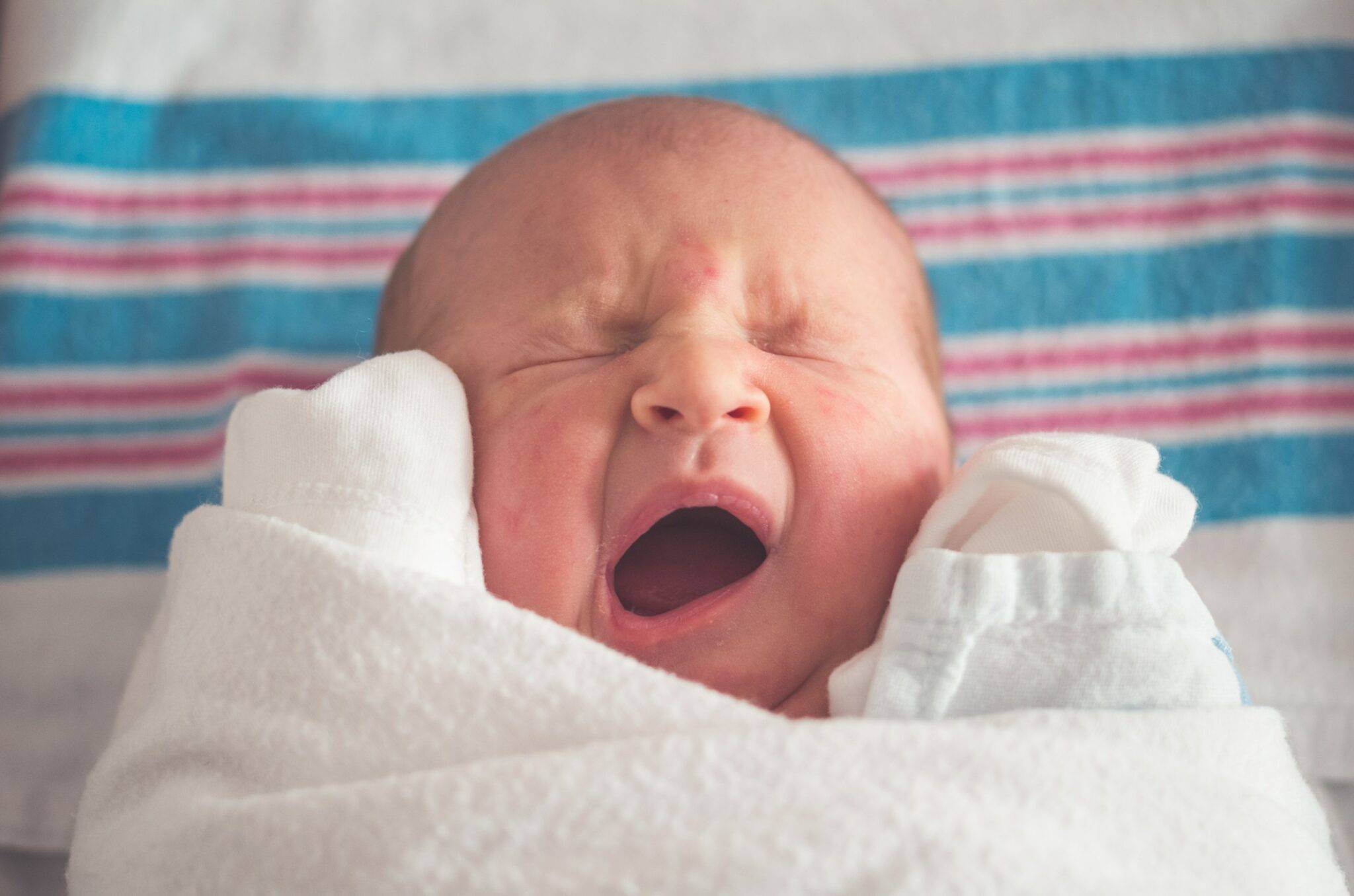As a parent, deciding to pierce your baby’s ears may be tricky. It’s natural that you want your baby to look adorable, but you should also prioritize their health and safety. This is why it’s necessary to be aware of the many factors before deciding.
Each factor plays a critical role in determining whether a baby’s ear piercing is appropriate. By weighing all the factors, you can decide what’s best for your baby’s overall well-being!
Remember, it’s your responsibility to make informed decisions, prioritizing your child’s safety and health in the long run.

1. Age
Before getting your baby’s ears pierced, consider her age. There’s no universally agreed-upon best age for ear piercing, though. A baby’s ears aren’t fully developed, and piercing them too early results in complications such as uneven healing, an increased risk of infection, and tearing or pulling on the earring.
Younger babies can’t articulate discomfort or pain, hence making any complications that may arise difficult. We, at Omega Pediatrics, advise waiting until your child is older than three months and has received two tetanus vaccinations before piercing their ears.
At three months old, the baby’s immune system is more developed and is less likely to experience complications from the procedure.
2. Consent
Consider obtaining your baby’s permission before piercing their ears. This can be accomplished by observing your baby’s reactions when discussing the procedure and allowing them to express their emotions through nonverbal cues.
Consider delaying the operation until later in life. Think about your child’s ability to communicate at that age. This encourages participatory decision-making and respects your child’s autonomy. Make sure you and your child have a healthy relationship.
Empower your child to make choices early on regarding their physical well-being. This gives children a sense of empowerment and responsibility that they can use in other areas of their lives!
3. Child’s Awareness
Consider your child’s level of awareness and comprehension of ear piercings. Younger babies don’t understand what’s happening and get scared or distressed by it. They may not comprehend the importance of after-care, thus increasing the risk of complications.
You can promote a positive and informed experience for your child by waiting until he or she is older and able to fully comprehend the procedure and its implications.
4. Attitude
Baby ear piercings should not be taken lightly. Ensure you’re mentally prepared for the procedure. If you’re nervous or unsure, it’s definitely not the time to do it. Your attitude toward the procedure will significantly impact your baby’s experience.
Also, consider your baby’s attitude toward the procedure. Strive to create a positive and comfortable environment for them in all cases. If your baby isn’t in his best condition, such as throwing tantrums, reschedule the procedure for another time instead.
5. Earrings
The American Academy of Pediatrics (AAP) recommends using gold post earrings that are small, round, and as flat as possible for your baby’s first piercing. 14-karat or higher gold is as good, but other metals such as surgical steel or titanium are safe alternatives.
Earring designs that are dangling, looped, or have other fancy and intricate designs aren’t recommended for babies. These are prone to being accidentally pulled, tugged, or falling off, which may cause injury to the ears.

6. Maintenance and Aftercare
Proper maintenance procedures after piercing the ears are critical to reducing the risk of infections and promoting the healing process. For infants, ensure that you follow the pediatrician’s instructions for aftercare and maintenance.
Apply rubbing alcohol or antibiotic ointment to the site twice daily for the initial few days. The earrings should be rotated gently daily and not be removed for four to six weeks. For toddlers and older children, gently clean the site on a regular basis and rotate the earrings.
Be watchful for signs of infection. If the piercing site becomes red or tender, an infection is likely, and you should seek treatment immediately.
And if you’re not ready to commit to maintenance care regularly, you may consider delaying the procedure for a few more years until your child is old enough to maintain his hygiene well.
7. Risks of Infection
Ear piercing increases the risk of ear infections. It may lead to complications and further problems if left untreated. Before anything else, ascertain that the piercer observes proper hygiene and sterilizes the tools and equipment.
For babies’ piercings, pediatricians recommend doing the procedure at a medical office to ensure sterile conditions. Nevertheless, be watchful for signs of infection in your baby’s ears. Seek medical attention as soon as possible if you notice any of the following.
- Bacterial Infection
Redness, swelling, discomfort, and discharge surrounding the piercing site are the most typical symptoms of infection following an ear piercing. With the right aftercare, such as keeping the region dry and clean, this can be avoided.
- Abscess
Pus is released from the piercing site in the form of an abscess. It may result in swelling, redness, and pain for your baby. Fever and other negative consequences are also possible.
- Allergic Reaction
Some babies may be allergic to the common metal used in the earrings, resulting in redness, itching, and swelling. Choosing hypoallergenic earrings—gold, silver, or platinum—to reduce the risk of an allergic reaction
- Cellulitis
This serious infection can cause swelling, warmth, redness, and fever. It can spread even beyond the piercing site. Keep an eye out for infection symptoms such as red streaks.
- Keloid Formation
A raised, bumpy, and occasionally itchy growth known as a keloid is caused by the formation of scar tissue near the piercing site. People who have keloid scarring in their family are more likely to develop it.
8. Health Status
In some instances, ear piercings aren’t healthy for babies. Those with health conditions such as weak immune systems, chronic illnesses, or skin sensitivities are likely to develop infections or other complications when they undergo ear piercing.
Also, certain medical conditions or medications may increase the likelihood of bleeding or impede the healing process.
You can guarantee that your child is healthy enough to undergo the procedure and that all the appropriate precautions are taken if you consult your child’s pediatrician before deciding on an ear piercing.
9. Family Medical Background
Your family’s medical background can significantly influence your baby’s ability to heal after an ear piercing. Some medical conditions can lead to complications, thus slowing the healing process.
It’s necessary to review your family’s medical history with a pediatrician that does ear piercing to see if your baby is at risk of complications. If so, reconsider if you still want your child’s ears pierced.
According to one study, keloids are likely to develop after the age of eleven. Avoid getting your child’s ears pierced if keloids run in your family. To avoid the risk of keloids, experts recommend piercing your child’s ears in early childhood rather than infancy if your child really wants his ears pierced.
10. Access To Quality Care
Before piercing your baby’s ears, ensure you have access to quality care in case complications arise. Select a reputable piercer with proper hygiene and professional experience piercing babies’ ears, or a pediatrician that performs baby ear piercing.
It’s also worth considering having a pediatrician ready to offer advice and care if problems arise.
11. Culture

Ear piercing is considered a cultural practice in many societies, and many do it at a very young age. For many families, the procedure is done at one month of age or as a pre-teen. In Chile, for example, baby girls are pierced within a few days of birth.
In India, ear piercing is an important Hindu religious tradition. The KarnaVedha Zanskar dictates that a baby’s ears, of both genders, be pierced during the first or third year of life.
Piercing your baby’s ears is more than just a fashion statement. It signifies a connection to family history—a watershed moment for both the child and the parent. If your grandmother had pierced ears as a baby, this practice will be passed on to the family’s lineage.
Furthermore, consider the potential impact of ear piercing on your child’s social interactions and perception by others, especially if you live in a community where this tradition is not commonly practiced.
By practicing ear piercing as a cultural tradition, be mindful of its implications to avoid appropriating or exploiting the culture of others
What Resources Are Available for Information on Infant Ear Piercing Safety and Recommendations?
When considering ear piercing for your infant, it’s essential to be well-informed. Several reliable resources provide comprehensive information on the safety and timing of this procedure.
Expert Health Advice
- Healthcare Websites:
- The University of Utah Health offers insights into the ideal age for ear piercing and considerations to keep in mind.
- The Centers for Disease Control and Prevention (CDC) provides guidelines on infant immunization schedules, which can be helpful when scheduling an ear piercing.
Cultural Considerations
- Different cultures have varying practices and traditions regarding the appropriate age for ear piercing. It’s useful to consult community leaders or cultural advisors to understand the cultural aspects.
Medical Recommendations
- Pediatricians and Family Doctors: Your healthcare provider is a crucial resource. They can offer personalized advice considering your baby’s health and development.
- Vaccination Timelines: Ensuring your child is up-to-date on vaccinations is important before proceeding with an ear piercing. Your child’s vaccination schedule can influence the timing of the piercing to minimize health risks.
Steps to Take Before Piercing
- Consult Your Pediatrician: Discuss any concerns and get a professional recommendation on the appropriate age and clinic for the procedure.
- Research Clinics: Look for places that ensure a sterile environment and have trained professionals, preferably licensed nurses, performing the piercing.
- Check Aftercare Instructions: Make sure the facility provides clear aftercare guidelines to reduce the risk of infection.
By leveraging these resources, you can make an informed decision that prioritizes your baby’s safety and well-being.
Get Your Child’s Ear Piercings When They’re Ready
Piercing a baby’s ears isn’t as easy as changing your baby’s diapers daily!
The decision to pierce your baby’s ears is a personal one that requires careful thought. There are some risks involved. As a parent, prioritize your baby’s health and well-being and make an informed decision, considering all relevant factors.
If you decide to pierce your baby’s ears, choose a reputable and experienced professional piercer or a pediatrician who uses sterile equipment and adheres to proper hygiene protocols.
At Omega Pediatrics, we aim to promote your baby’s health and well-being. You can make an informed decision, prioritizing your baby’s health and happiness, if you carefully consider each factor before deciding on an ear piercing.
Remember: you are your baby’s advocate, and by making informed decisions, you can ensure your baby is healthy, safe, and happy!



